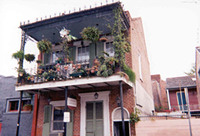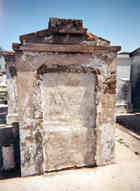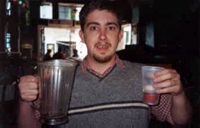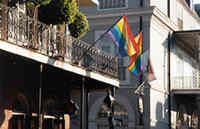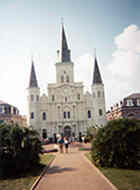|
|
|


As a tourist attraction, New Orleans certainly has plenty to see. French Quarter balconies draped with lush, green vines. Ancient oaks full of dusty-grey Spanish moss. Restaurants serving up Jazz and the finest Cajun cuisine. Crumbling crypts, including Marie Laveau’s. People come in droves to Mardi Gras, attracted by the parades, the beer, the beads, the bare breasts. Then, once their rolls of film are full and their wallets are empty, they go back to their mundane lives, feeling that they have truly touched the soul of the Big Easy.
If they had only stepped off the balcony for one moment, had gotten down on the old stone streets and looked around, they might have thought differently.
Really, I shouldn’t be so hard on the tourists. They do their best. Besides, many born-and bred New Orleanians don’t know about the lives some of their own neighbors lead. If the natives can’t tell visitors about these things, who will?
In the early 90’s, a few of the academics in the gay studies field became dissatisfied with the either / or view of homo- and heterosexuality, especially in the way the view disregarded bisexuality and cross-dressing. Seeking to break through the barriers between the two, they formulated what is now known as queer theory. In short, what queer theory postulates is that sexuality is not quite so biologically determined as many would believe, especially in terms of what sexual behaviors are allowed and which are not. According to this theory, societal rules, not biological encoding, determine the “rightness” or “wrongness” of these acts. Thus, many of the things many people take for granted as “unnatural” or “strange” are simply things that society has pushed off to the side, marginalized, and pretended to ignore.
What does this have to do with the hidden aspects of New Orleans? The “hidden” aspects are only hidden because the surrounding culture doesn’t want to see them. They aren’t bad or wrong, simply different from the way society says life should be.
I intend to bring at least two of these subcultures back, blinking, into the light.
The first one I want to introduce harks back to the foundations of queer theory: the gay community. Wait, you might be saying to yourself, I already know about that. I’ve been to the French Quarter; I’ve seen the rainbow flags, the Gay Pride shops, the clubs. They’re not hidden at all. But you don’t know the whole story.
The other one I want to deal with, a minority religious “community,” many people don’t even know exists. It only loosely follows along with queer theory, because it doesn’t have anything to do with sex. But it has been pushed out of the public eye by a society that couldn’t accept it. New Orleans, like the rest of the United States, is predominately Christian. New Orleans takes this a step further, being predominately Catholic. On the flip side, New Orleans is also the Voodoo Capital of America. What slips most people’s minds is that other religions exist in New Orleans as well. Well, of course I know about that. Do you?
You’re in for a rare treat, you who have lived in New Orleans your whole lives. I’m giving you the opportunity to be a tourist in your own home town. As for the rest of you, the actual tourists, tag along: you’ll go home with pictures none of your friends will have ever seen.
